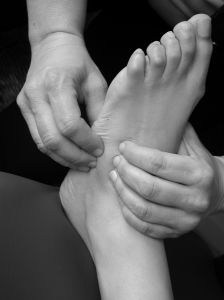Tylenol and Opioids
Is Tylenol leading us into an Opioid epidemic?
We had a surprise answer to one of our questions at a recent Drug Education lecture. We lecture Junior and High School children on drugs. We cover drugs in general but do spend a bit of time on alcohol and marijuana. Alcohol because it destroys so many lives and marijuana because it is becoming and has become legal in many areas. And is no less dangerous because of it.
We also explain opioids, from morphine to oxycodone to Fentanyl and Carfentanil. One of the key things that a lot of kids don’t know or understand is that opioids are  pain killers. And as such are very effective. Tylenol is also a pain killer.
pain killers. And as such are very effective. Tylenol is also a pain killer.
If you want a decent article describing Fentanyl and Carfentanil, what they are, comparisons and dangers, check out The Cabin Group
One of the questions that we sometimes ask the kids is to name some ‘safe’ drugs. Tylenol comes up pretty consistently. Our point in the lecture is to make sure that the students know that even prescribed, medical drugs can be used incorrectly and create an overdose.
Per drugs.com Tylenol (acetaminophen) is a pain reliever and fever reducer. Used to treat “headaches, muscle aches, arthritis, backache, tooth aches, colds, and fevers.” Acetaminophen is also in other pain relief drugs such as Vicodin and Percocet. Percocet for one, is extremely addictive.
The Question:
We don’t always ask this question but it seemed pertinent so we asked for a show of hands of how many in this class had taken Tylenol. Almost 100% of the students put up their hands. To me, this was a bit of a shock.
Now, I’ve spoken to numerous people that grew up in the 50s, 60s and 70s. The ‘go to’ drug after one got their tonsils removed was ice cream. If you broke your arm, you might have been knocked out while it was being set by the doctor, but then you were told that it would likely hurt a bit when it was healing. Most parents in the 50s and 60s may have had some aspirin in the medicine cabinet and some band aids. My parents were a doctor and a nurse and they were hesitant to even give us that (aspirin). The standard fix for a fall, bump or scrape was ‘kiss it better’ and ‘get back on the horse’.
For a fever, it was a hot bath. If you want to know why you should NOT use Tylenol for your child’s fever, and why a bath would be better, check out this page on The Healthy Home Economist
Two things come to mind with this ease of dispensing drugs to children for every runny nose or scraped shin. One, these small bodies are not built to handle the  volume of drugs that are currently poured into them.
volume of drugs that are currently poured into them.
"Acetaminophen poisoning has become the leading cause of acute liver failure in the United States," report the authors of a new study in the December 2005 issue of Hepatology, the official journal of the American Association for the Study of Liver Diseases (AASLD). Tylenol is the leading brand name for acetaminophen.
(The site with the above quote also gives some alternatives to toxic drugs like Tylenol: Rejuvenation Science
The liver cleans out the toxins from our bodies. Overworked and weakened at a young age is going to affect a person’s immune system. If you don’t mind an extremely technical article, (you may have to look up a lot of words), here is one that explains how a weakened liver can result in poor immune response to disease. Science Direct
And as noted in the Healthy Home Economist page above:
“… reaching for the Tylenol or ibuprofen to suppress what is actually one of the body’s most important defensive reactions to a pathogen. In some cases, caregivers may erroneously believe that reducing the fever somehow makes the child well again, sending him/her to school or an important sporting event rather than to bed for as long as it takes for the fever to resolve itself naturally.
Suppression of one of Mother Nature’s most important protective and detoxifying mechanisms is harmful to the child both in the short term and the long term.
In the short term, fever suppression actually opens the door to a secondary infection and the likely need for antibiotics to resolve the illness. In other words, if you want to avoid antibiotics, don’t bring down the fever. The heat of the fever significantly slows the speed with which a pathogen can replicate and spread, thus giving the body more time to resolve the problem naturally.”
 Secondly, and this is equally important, it can easily put the young person in the frame of mind where he or she would turn to a drug as a solution to any sort of problem, physical or emotional. Over the last twenty, thirty years or so, pain, a symptom, has become something that one treats instead of finding and treating the actual cause. Often masking or exacerbating the issue. There are all kinds of natural treatments for inflammation for example. But even with that, what is causing the inflammation. But this doesn’t get resolved if a person is trained at an early age to pop a pill for a quick fix.
Secondly, and this is equally important, it can easily put the young person in the frame of mind where he or she would turn to a drug as a solution to any sort of problem, physical or emotional. Over the last twenty, thirty years or so, pain, a symptom, has become something that one treats instead of finding and treating the actual cause. Often masking or exacerbating the issue. There are all kinds of natural treatments for inflammation for example. But even with that, what is causing the inflammation. But this doesn’t get resolved if a person is trained at an early age to pop a pill for a quick fix.
A sad thing about this is that doctors are now pretty much trained to take this route. Doctors have become pill dispensers, treating symptoms and rarely do you find a physician that will take the time to find the underlying cause.
Take this a step further to the damage that could be caused with regard to emotional and mental issues. If the whole ‘pop a pill’ solution transfers over to emotional issues then no one may ever have to feel anything again. As the fellow said, you still have the problems when you stop taking the drugs.
Opioids, pain killers, are horribly addictive. Over the counter products like Tylenol don’t have the quantities to be terribly addictive but if your goal is to become addicted to something like oxycodone, well, it is a natural progression.
So, please look at your life and see if you are conditioning your children to look for the quick solution of a drug, or are you teaching and training them to solve life’s issues, whether physical, mental or emotional.
Check out our 'Resources' page for some helpful links
